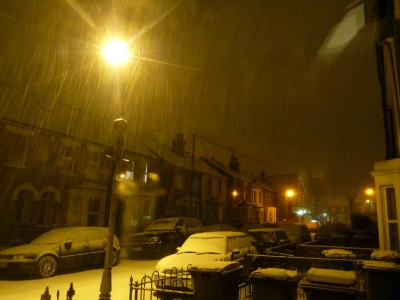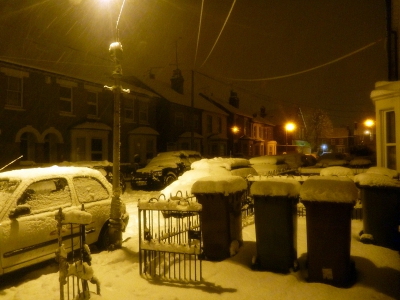Saturday, January 23. 2010
Magnetic implants: Implantation video
It has been a year and a month since I had a tiny magnet implanted into the middle and ring fingers of my left hand as a central part of my MEng research project in which I was exploring a novel man-machine interface based on these subdermal magnetic implants. The magnets are still in there, safe and sound and still allowing me to "feel" magnetic fields everywhere around me - like around wires, washing machines, microwaves, ATMs, supermarket checkouts, power supplies, hard disks, fans etc. The research is still continuing as we now have another student at the University of Reading Cybernetics department who has gotten the same implants and are providing a second set of data on the properties of the interface.
Anyway, I wanted to share the video of the implantation procedure (blood-filled as it maybe) just posted on YouTube by Mac McCarthy who had performed the procedure on me. The doctors at the university medical practice had refused to do the procedure due to safety and insurance concerns so I had had to find an alternative means of getting the magnets implanted. It took a fair bit digging and looking around before I found Mac's Punctured Body Modification shop. I was slightly nervous at the start since it was the first time that Mac was attempting to perform a procedure of the kind but luckily everything went quite smoothly. It was an interesting experience; sitting in a chair, watching keenly as my fingers were cut, probed, magnet shoved in and incision stitched while blood oozed out...
Yes, that is my hand!
Anyway, I wanted to share the video of the implantation procedure (blood-filled as it maybe) just posted on YouTube by Mac McCarthy who had performed the procedure on me. The doctors at the university medical practice had refused to do the procedure due to safety and insurance concerns so I had had to find an alternative means of getting the magnets implanted. It took a fair bit digging and looking around before I found Mac's Punctured Body Modification shop. I was slightly nervous at the start since it was the first time that Mac was attempting to perform a procedure of the kind but luckily everything went quite smoothly. It was an interesting experience; sitting in a chair, watching keenly as my fingers were cut, probed, magnet shoved in and incision stitched while blood oozed out...
Yes, that is my hand!





